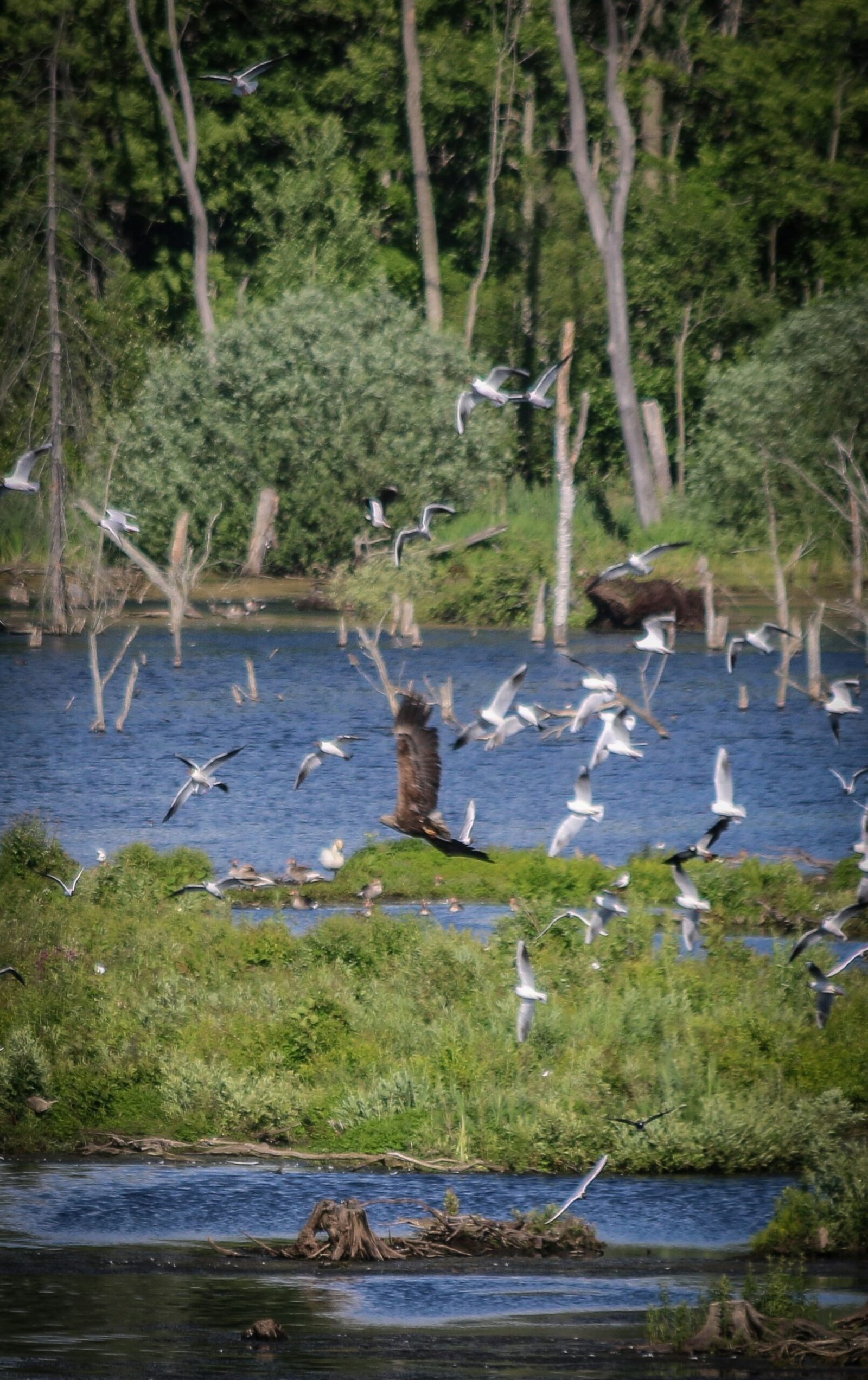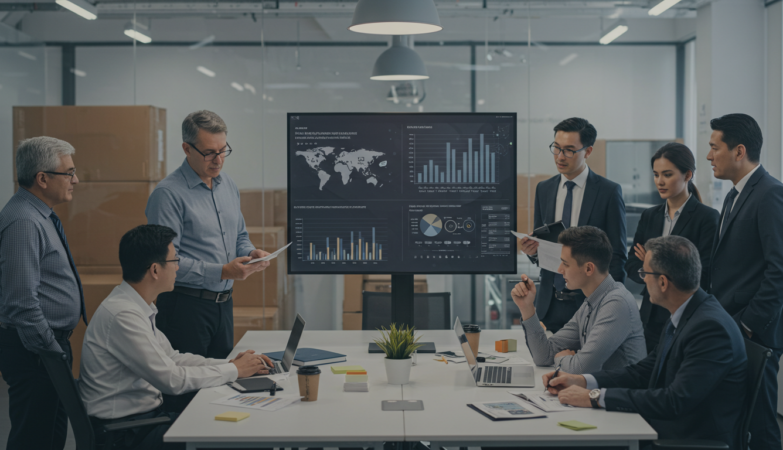Introduction to Eagle Hunting
Eagle hunting in Mongolia, an ancient and revered tradition, plays a significant role in the nomadic lifestyle and cultural heritage of the region. This unique practice has persisted for centuries, intricately weaving the stories and lives of the people with the majestic golden eagle, known in Mongolian as “bultuk.” Within nomadic communities, eagle hunting serves not just as a means of survival but as a symbol of honor, pride, and resilience. The art, skill, and commitment demonstrated by eagle hunters—referred to as “berkutchi”—epitomize the profound connection between humans and nature.
The historical roots of eagle hunting are deeply embedded in Mongolian society, originating from a need to provide food and materials for survival in the harsh landscapes of the Altai Mountains. As lifestyles evolved, the relationship between berkutchi and their eagles grew from one of mere practicality to one of mutual respect and companionship. This bond is evident in the training process, which begins when the eagle chick is taken from its nest. The berkutchi raises the eagle, fostering a relationship characterized by trust and reliance. The deep understanding between the hunter and the eagle becomes a vital aspect of their identity and skills.
Today, eagle hunting is recognized not only for its practical significance but also as an essential aspect of Mongolia’s cultural legacy. The skills required for this practice, passed down from one generation to the next, enhance its cultural richness. Festivals celebrating eagle hunting, such as the annual Golden Eagle Festival, attract attention both locally and internationally. This event highlights not just the competition amongst hunters but the artistic and social aspects of the tradition, further solidifying the bonds formed through this remarkable relationship in the fabric of Mongolian society.
The Art of Training Eagles
The traditional practice of training golden eagles in Mongolia is a meticulous, time-honored skill that embodies both patience and expertise. Capturing a young eagle, typically at the age of three months, is one of the first critical steps in this intricate process. Hunters often locate their target nests in the rugged terrains and utilize methods such as climbing or luring to capture eaglets, ensuring that the young birds are not subjected to undue stress.
Once captured, the focus shifts to acclimatizing the eagle to its new environment and the hunter. This phase involves building trust between the bird and the handler, which is crucial for the training regimen that lies ahead. The initial training often centers on developing the eagle’s instincts while reinforcing specific commands and signals from the hunter. Techniques include rewarding the bird with food to positively reinforce desired behaviors, ensuring that it associates hunting and commands with positive experiences.
As the eagle matures, the training regimen evolves to incorporate more complex tasks. Trainers simulate hunting scenarios using lure devices that mimic the movement of prey, teaching the eagles to track and dive. This process requires constant repetition and adjustment to cater to each eagle’s individual learning curve. The hunters often spend hours a day engaging with their birds, showcasing the significant investment of time and effort necessary to develop a successful partnership.
Moreover, the connection forged between the hunter and the eagle is pivotal. Successful eagle hunting transcends mere training; it embodies a profound bond that is cultivated over years. This relationship is characterized by mutual respect, understanding, and a shared purpose, reflecting the deep cultural heritage associated with this unique practice in Mongolia’s nomadic lifestyle.
The Role of Women in Eagle Hunting
Women in Mongolia’s eagle hunting culture, though historically overshadowed by their male counterparts, have been integral to the tradition of berkutchi. Traditionally, eagle hunting was predominantly seen as a male-dominated practice, rooted in cultural norms and societal expectations. However, as the world evolves, so too does the role of women in this ancient craft. Historical accounts reveal that women have participated in eagle hunting for centuries, often serving as trainers and handlers of the birds, despite not always being in the spotlight.
The contributions of female berkutchi are significant in preserving the knowledge surrounding eagle hunting techniques and bird care. Many women have passed down their skills and wisdom through generations, ensuring the continuation of this unique cultural heritage. In some regions, women have also taken on the responsibility of scouting areas for hunting, thus playing a crucial role in the success of the hunt. Such contributions highlight the multifaceted involvement of women in the eagle hunting practices, a fact that is often overlooked.
Modern advances and changing societal attitudes are encouraging more women to engage in eagle hunting. Today, initiatives and organizations promote gender inclusivity within this tradition, empowering women to take up roles as eagle hunters. Workshops, training camps, and festivals actively foster female participation, showcasing the talents of women alongside their male counterparts. This shift not only broadens the skill set within the community but also redefines traditional gender roles associated with hunting.
As female eagle hunters gain recognition, their stories inspire younger generations of women to challenge stereotypes and explore the world of berkutchi. This flourishing involvement further enriches the cultural fabric of Mongolia, affirming that both men and women can uphold and advance the legacy of eagle hunting together.
The Hunting Process and Techniques
The age-old practice of eagle hunting in Mongolia is a striking blend of skill, tradition, and an intimate bond between the hunter and the eagle. The hunting process commences after the eagle has been thoroughly trained to respond to specific commands from its handler, known as the berkutchi. This training phase usually begins when the eagle is just a chick, teaching it to recognize its handler and obey cues for take-off and return.
When the time for hunting arrives, hunters select a designated hunting ground, often in areas known for an abundance of prey such as foxes, hares, and other small mammals. The berkutchi sets out with the eagle perched on their arm or a special glove. Once they reach a suitable vantage point, the hunter releases the eagle, which then soars to spot potential prey from high above. The eagle’s keen eyesight is indispensable in locating elusive targets, reflecting the importance of its role in this symbiotic relationship.
Motivated by the desire to capture prey, the eagle dives towards the ground with incredible speed once it spots an animal. Its powerful talons strike with precision, ensuring a high success rate in capture. The use of trained eagles in this traditional hunting practice highlights a nuanced understanding of the natural instincts of the birds and the strategies required to manipulate these instincts for successful hunts.
Moreover, various rituals and customs accompany the hunt, ranging from offerings to the eagle before the hunt to celebrating the successful catch with communal feasting. These rituals enhance the cultural significance of the activity, reinforcing the bonds not only between the hunter and the eagle but also among the community of eagle hunters. Overall, the process emphasizes a deep respect for nature, showcasing the multifaceted aspects of Mongolia’s nomadic eagle hunting culture.
Cultural Significance of Eagle Hunting
Eagle hunting in Mongolia transcends the mere act of capturing prey; it represents a profound cultural heritage that intertwines with the nomadic lifestyle of the Kazakh people. Traditionally, eagle hunting serves as a medium through which ancestral values are preserved, showcasing the intricate relationship between humans and nature. This practice epitomizes respect for the environment, where the eagle becomes a symbol of strength and freedom, embodying the spirit of the steppes.
The significance of eagle hunting lies in its role as a rite of passage for hunters, often introducing young individuals into the world of their forebears. As they learn the craft from experienced mentors, they acquire skills necessary to bond with the eagle, which is paramount for successful hunting. This intergenerational knowledge transfer not only sustains traditions but also strengthens familial and communal ties, fostering a sense of belonging among participants.
Cultural celebrations, such as the annual Eagle Hunting Festival, further enhance the prominence of this art form. The festival attracts enthusiasts and spectators from across Mongolia and beyond, providing a vibrant platform for showcasing hunting prowess and artistry. During this event, participants don traditional regalia, elevating the festive atmosphere and promoting cultural pride. Competitions highlight the agility of the eagles and the skills of their trainers, creating a unique spectacle that captivates attendees while preserving the legacy of eagle hunting.
Moreover, these communal gatherings play a vital role in connecting people to their environment, reinforcing the importance of wildlife conservation. As communities unite to celebrate the traditional practice, they emphasize the need to maintain harmony between human practices and the natural world. Through eagle hunting, individuals not only honor their cultural heritage but also advocate for sustainable coexistence with wildlife, thus enriching the cultural tapestry of Mongolia.
Challenges Facing Eagle Hunters Today
The practice of eagle hunting in Mongolia, a time-honored tradition steeped in cultural significance, is increasingly being challenged by various modern forces. One primary concern is the environmental changes that have begun to impact the regions where these nomadic hunters reside. Climate change, which results in altered weather patterns and temperatures, poses risks to the habitats of both the golden eagles and their prey. This disruption not only affects the hunting success but also threatens the ecological balance that has sustained this practice for generations.
Additionally, habitat loss is becoming a significant issue for eagle hunters. As urbanization expands and agricultural practices intensify, traditionally used lands are diminishing. This encroachment on natural environments limits the available space for both the eagles and the hunting communities that depend on them. This not only impacts their traditional methods but also poses a risk to the population of golden eagles in Mongolia, as fewer areas are available for these majestic birds to thrive.
Modernization also brings about cultural dilemmas for eagle hunters. While advancements in technology and communication have the potential to enhance their methods, they can also dilute the authenticity of the eagle hunting tradition. The younger generation faces a balancing act between embracing modern conveniences and preserving the rituals and practices passed down from their ancestors. Many young individuals are drawn to urban life and may overlook the significance of their heritage, leading to a gradual decline in the number of practicing eagle hunters.
To thrive in such a transformed landscape, eagle hunters must navigate the complexities of maintaining their cultural heritage while adapting to new realities. The preservation of this noble tradition hinges on the collective effort of the community and policy initiatives that recognize and protect their way of life amidst these ongoing challenges.
Eagle Hunting as a Tourism Experience
The practice of eagle hunting in Mongolia has evolved into a captivating tourism experience that draws visitors from around the globe. This ancient tradition, primarily associated with the Kazakh minority, involves the use of trained golden eagles to hunt for game such as foxes and rabbits. Tourists have the unique opportunity to engage with this profound cultural heritage through a range of guided tours and immersive activities.
Organized tours often include participation in eagle hunting events, where visitors can observe seasoned hunters and their majestic birds in action. These excursions not only offer a deep dive into the traditional practices and values surrounding eagle hunting but also provide tourists with firsthand experiences in training eagles, understanding their care, and learning the skills necessary for hunting. Moreover, local eagle hunting festivals, such as the Golden Eagle Festival, attract countless visitors and showcase the artistry, strength, and bond between the hunter and their eagle, fostering a greater appreciation for this unique lifestyle.
However, the burgeoning tourism industry surrounding eagle hunting is not without its challenges. As the demand for authentic experiences grows, there is a risk of commodifying these traditions. The delicate balance between cultural preservation and commercialism must be carefully navigated to ensure that the integrity of this ancient practice remains intact. While tourism can provide economic benefits to local communities, such as increased income and visibility, it also poses potential threats to the authenticity of eagle hunting as more people attempt to exploit this practice as a mere spectacle.
In this context, sustainable tourism initiatives are vital to preserving the authenticity of eagle hunting. Engaging with local communities and fostering respectful cultural exchanges can help safeguard this ancient tradition while providing tourists with enriching experiences. Through mindful tourism practices, the rich culture of eagle hunting can be experienced and appreciated by future generations.
Conservation Efforts and Sustainable Practices
The cultural practice of eagle hunting in Mongolia, while rich in tradition, poses challenges to both the environment and the golden eagle population. In response to these challenges, various conservation efforts have emerged, aimed at safeguarding both the majestic birds and the unique cultural heritage associated with their use in hunting. Key organizations and local communities are collaborating to promote sustainable practices that respect the ecological balance, ensuring that eagle hunting can continue for future generations.
One significant initiative involves the establishment of conservation education programs for eagle hunters and their families. These programs focus on raising awareness about the importance of wildlife preservation and the ecological roles that golden eagles play in their habitats. Through workshops and community discussions, hunters are encouraged to adopt responsible practices that minimize their impact on local ecosystems. This includes regulated hunting periods, limits on the number of eagles captured, and methods that reduce stress on the birds. By fostering a deep understanding of ecological principles, these initiatives aim to harmonize traditional hunting practices with modern conservation needs.
Additionally, partnerships with wildlife organizations have led to the implementation of monitoring systems for eagle populations. Researchers tag eagles to track their movements and study their behaviors, providing valuable data that informs conservation strategies. This scientific approach allows for the identification of population trends and potential threats, enabling prompt action to protect these birds. Local communities, involved in monitoring efforts, also develop a sense of stewardship over their natural resources, reinforcing the cultural significance of golden eagles in their lives.
Ultimately, these combined conservation efforts not only benefit the golden eagle population but also ensure the survival of the rich heritage of eagle hunting in Mongolia. By fostering sustainable practices within this cultural context, a future where both the eagles and the traditions surrounding their hunting can thrive is attainable.
Conclusion: The Future of Eagle Hunting in Mongolia
Mongolia’s nomadic eagle hunting culture is a unique practice that embodies the rich heritage of the Kazakh people and their deep connection with nature. Throughout this exploration, we have highlighted the historical significance, techniques, and the intricate bond between the hunters and their majestic birds. As modernity encroaches on traditional ways of life, it becomes crucial to assess the future viability of this remarkable culture.
One of the primary challenges facing eagle hunting is the increasing influence of globalization, which often discourages the continuation of traditional practices. Yet, this situation also presents an opportunity for nomadic eagle hunters to adapt and innovate. Engaging the surrounding communities, fostering awareness about this cultural practice, and offering educational programs can help ensure that younger generations appreciate and embrace these age-old traditions. By fostering a dialogue between traditional and modern values, it may be possible to create a sustainable model that respects both heritage and contemporary needs.
Furthermore, the involvement of international tourism can play a significant role in the future of eagle hunting in Mongolia. As more travelers seek authentic experiences, the demand for cultural exchanges can provide an incentive for communities to preserve their unique practices. However, engaging ethically with tourism is essential to prevent the commodification of the culture, ensuring that it remains a genuine expression of Kazakh identity rather than a mere spectacle for visitors.
In conclusion, the future of eagle hunting in Mongolia hinges on a balance between tradition and modernity. By fostering community engagement, supporting the next generation of eagle hunters, and responsibly integrating tourism, it is possible to ensure that this extraordinary cultural heritage continues to thrive for years to come. The enduring spirit of eagle hunting is not only a testament to Mongolia’s vibrant history but also an integral part of its ongoing cultural narrative.





